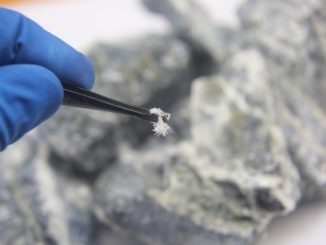
Dr Heather Payne, consultant paediatrician and member of the Welsh Government’s technical advisory cell – known as TAC – describes her role as helping to get together the ‘best advice’ to inform ministers making decisions, answers some questions on the science behind school closures
CREDIT: This is an edited version of an article that originally appeared on BBC News
What changed to lead to schools being closed?
“I think the most important thing is that the overall rates of coronavirus infection were going up. We know now that was due to this new variant. It is coronavirus but it’s much more infectious than the original one that we were dealing with last year. That in itself led to changing our advice around the operation of schools.
“Now it might be tempting to think that children are spreading it in schools,” she says, “but when we break down the data we find that, actually, schools are safe, secure environments for children.”
However, Dr Payne acknowledges that keeping schools open had meant there were more opportunities for ‘social mixing’, which could help the virus spread, such as walking to and from school, or attending after-school activities.
“Unfortunately, the advice had to change to moderate the amount of time that people spent in school because it was clear that it was associated with greater rates of infection,” she says.
Where in schools is transmission happening?
Dr Payne explains that, despite efforts, scientists are still unable to say for certain where in school environments coronavirus might be passed on. “I think the problem is that we really don’t know, we’ve asked this question to some of the best scientists in the country,” she says. “Even the head of the Office of National Statistics agrees that we just don’t have the evidence of where, during the school day, from leaving the house in the morning to getting back in the evening, transmission really takes place.”
However, Dr Payne feels some areas are riskier than others. “We know that it’s more likely when people are moving around, and coming within close contact with each other, so that they can have a face-to-face conversation – communal areas – so, in the corridors, or just being in large groups in the school.
“We have said that it should be strongly advised that people wear face coverings during that period [between lessons], so that reduces the risk in what are likely to be higher risk areas.”
Teachers have also been urged to open classroom windows towards the end of lessons “so that fresh air can come in and wherever possible,” she adds.
What might need to be done to reopen schools?
“We are looking at all possibilities,” Dr Payne says. “We have to go back and look at everything.” She explains that scientists would consider whether schools needed any other measures to be brought in before re-opening, and are continuing to look at issues, including COVID testing and face coverings, as well as how to reinforce messages on ‘safe behaviours’ for things like walking to school, where children might consider sharing “mobile ‘phones and cans of fizzy drink.”
Despite looking at this range of measures, Dr Payne says one of the biggest factors determining when it might be safe to re-open schools is simply whether enough people are sticking to basic rules when outside, such as social distancing, and not mixing with other households.
Do children have different COVID symptoms to adults?
“There is some really important research that does show that children can have a wide range of symptoms in coronavirus,” explains Dr Payne. However, she points out that any child would also have one of the two main symptoms of coronavirus alongside anything else. “They will have one of the core symptoms – the cough, or the fever – what we’ve always said is that children present in all sorts of different ways.”
Dr Payne says it was more common for children to have a fever with coronavirus but, if there is any doubt, people should look to get a test. “If you’re worried about your child, you should get helpful medical advice from the usual routes – so don’t suffer in silence,” she says. “Don’t wait on a child with a temperature; always take advice.”
What’s the science behind nurseries remaining open?
“Nurseries are a vital part of supporting both children and the economy, and allowing people to work,” says Dr Payne. “They have not had to restrict their operations, partly because of the intelligence we’re getting. The evidence is that we are not seeing very many cases in nurseries. If that changes as we monitor it, then it’s possible this advice might have to change. You have to be conscious of any downside of actions to restrict the spread of infection.
“This is the balance that has been arrived at, for the moment.”



Be the first to comment